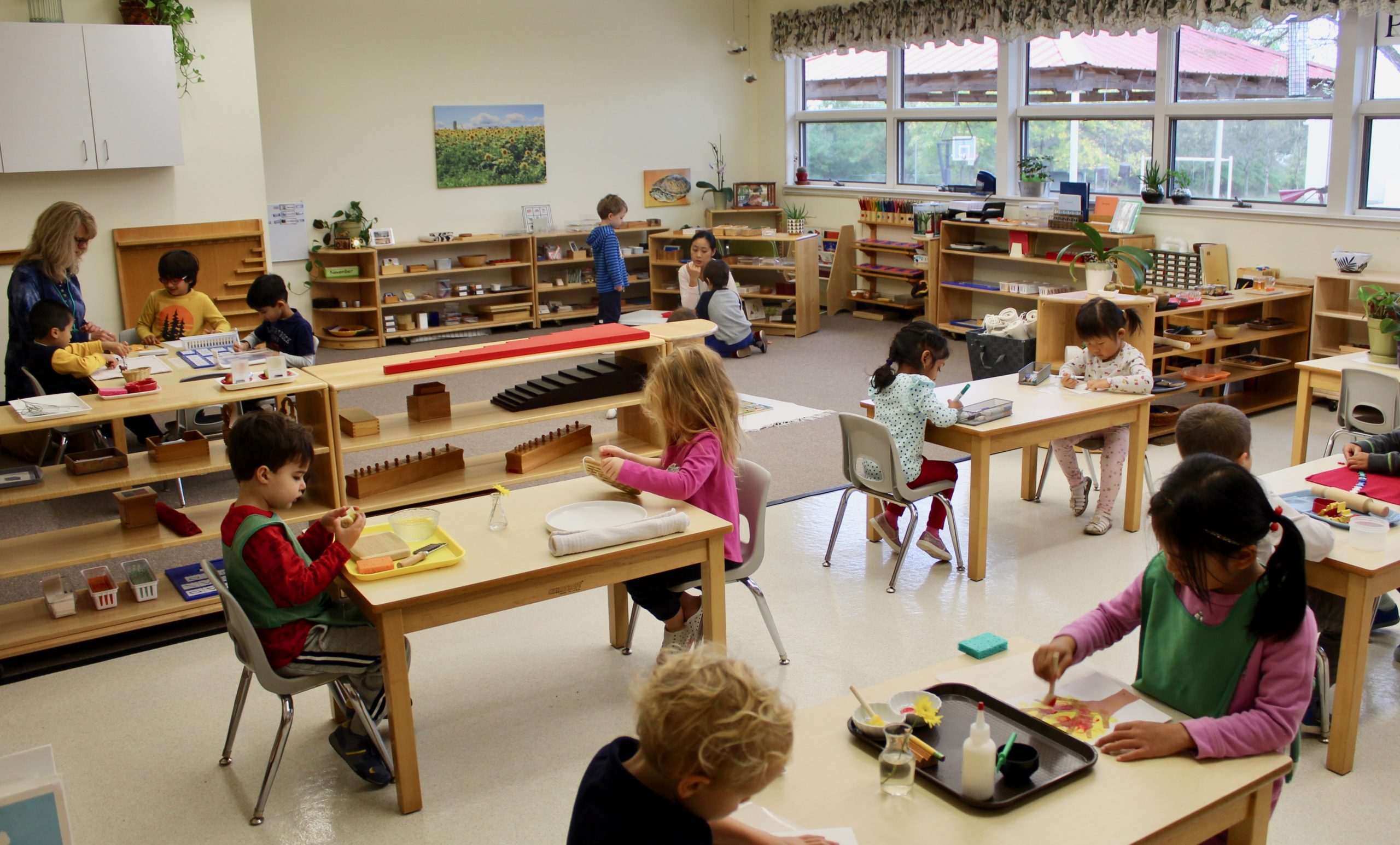
Before a new faculty member begins work at Princeton Montessori School we ask that they observe in the classrooms so they can see first hand what the Montessori method looks like. Afterwards they reflect on what they have seen. Recently we received this note about an observation:
.
Montessori classroom observation
.
During my observations last week in the Montessori school classrooms I saw that many of the learning activities in the classroom had real life purpose. I saw a child pouring water in a jar, children cleaning tables after they finished their lunches, and other children sweeping the floor. These are clearly important independent life skills and the children were developing essential fine and gross motor skills.
.
One of the observations that called my attention was in one of the primary classrooms when I found a child working on a puzzle of the continents. He traced one of the continents on a piece of color construction paper and then he poked holes in the paper and cut out the shape of the continent then glued it onto a bright construction paper. This process took quite some time, but the child was really engaged in his lesson. I noticed that he enjoyed teaching himself the shape of the continent. I glanced around to see what some of the other children were doing and noticed that almost all of the children were engrossed in their work be it practical life, math, sensorial, etc.
.
Some of the samples of how teachers allow for independence and freedom are how the children are free to move in the classroom and choose their own work within limits of appropriate behavior. They can freely walk around the classroom and learn to explore their interests. Freedom of time allows children to work with the same material for as long they like and freedom to communicate allows them to discuss activities, projects, concerns, problem solve and develop their social skills. However, there are limits in the classroom because the kids must respect each other, respect each other’s space, respect the environment and take the proper care for everything in the classroom.
.
The structure in the room comes from the multi-age classroom, where the younger students look up to the older students as mentors. The students reinforce positive behavior and remind each other how to care, how to respect themselves and their community. Teachers communicate to the students with respect by using the appropriate tone of voice, slowly and clearly, bending down to look into the child’s eyes if required, and taking the time to listen to the child.